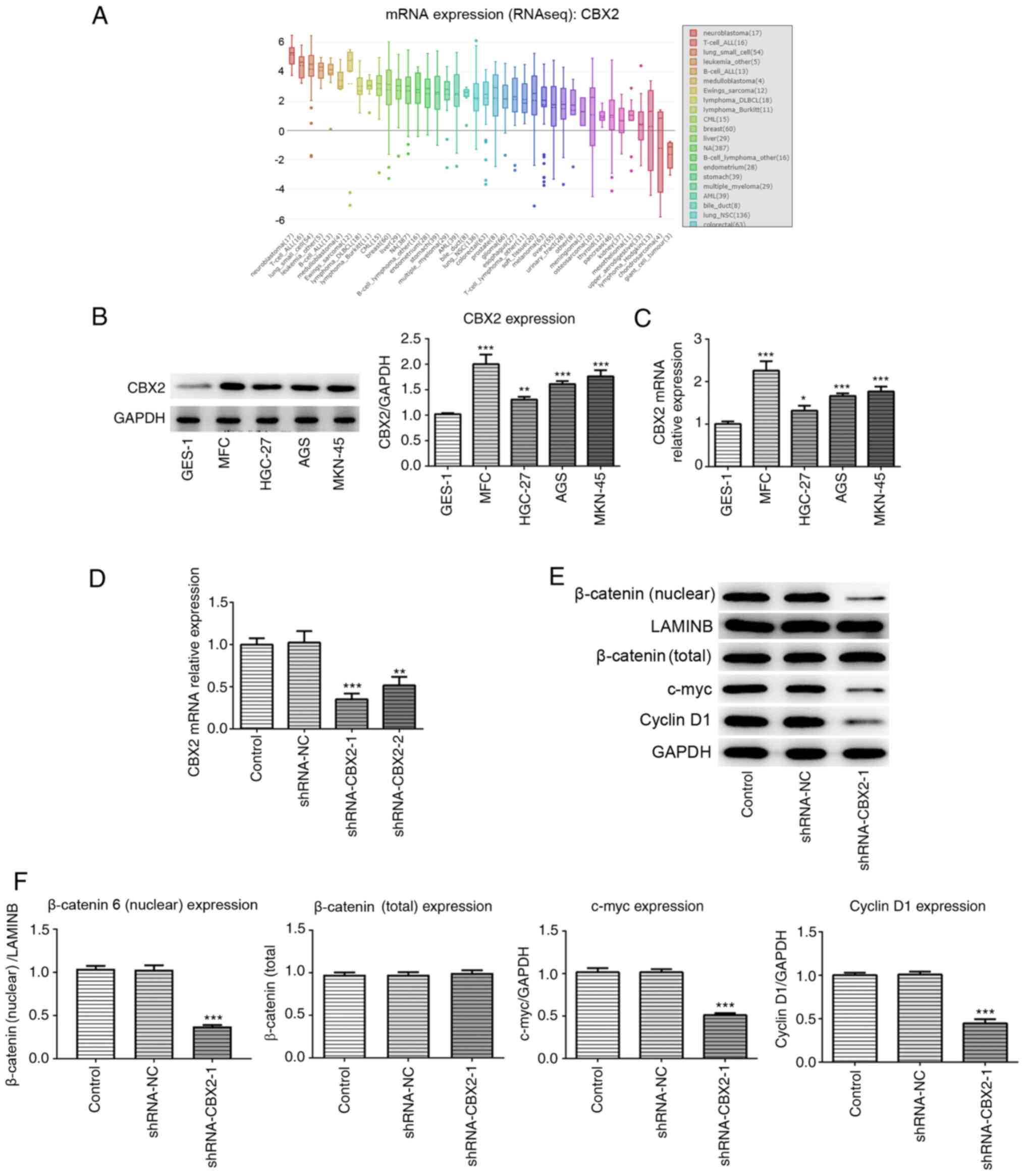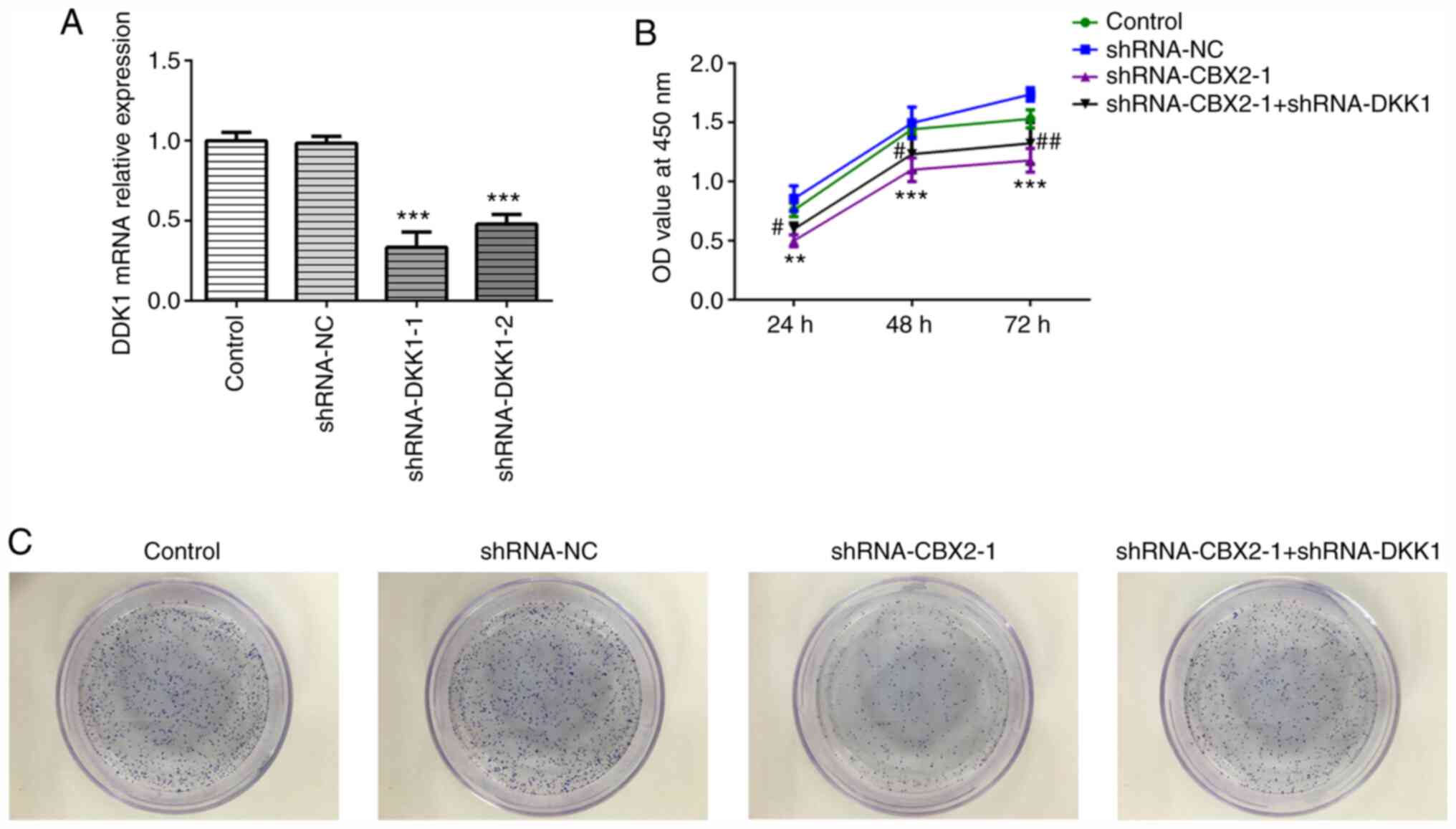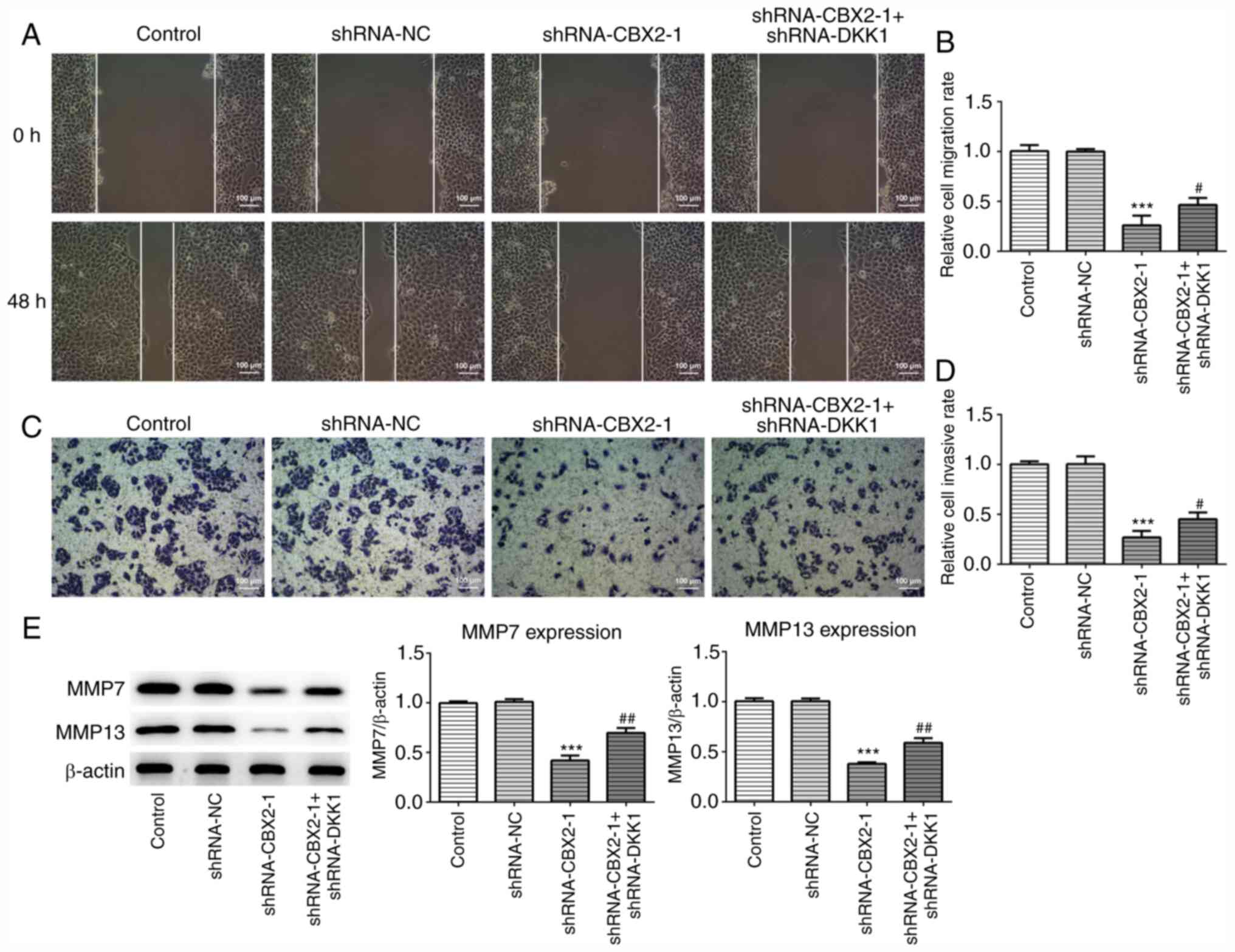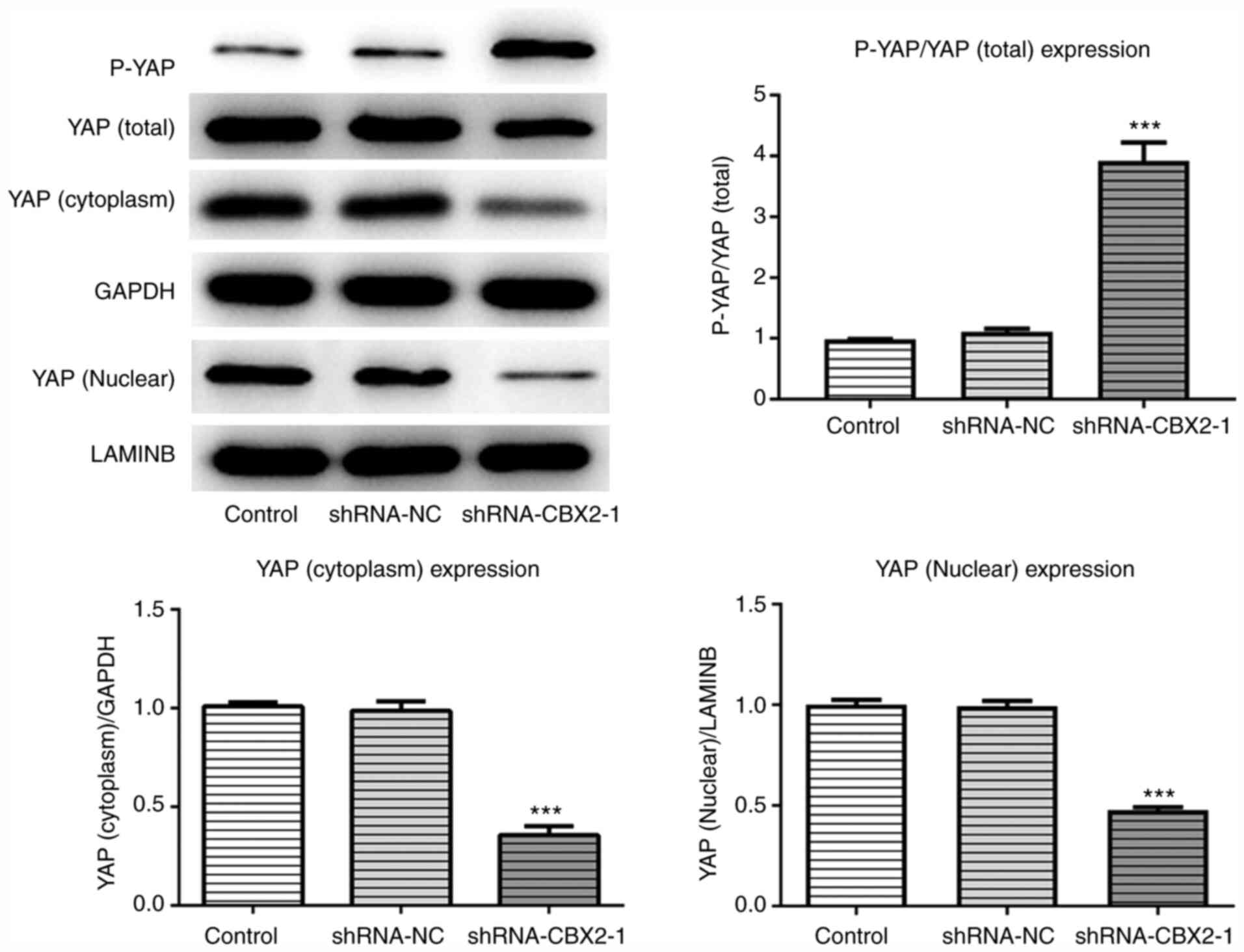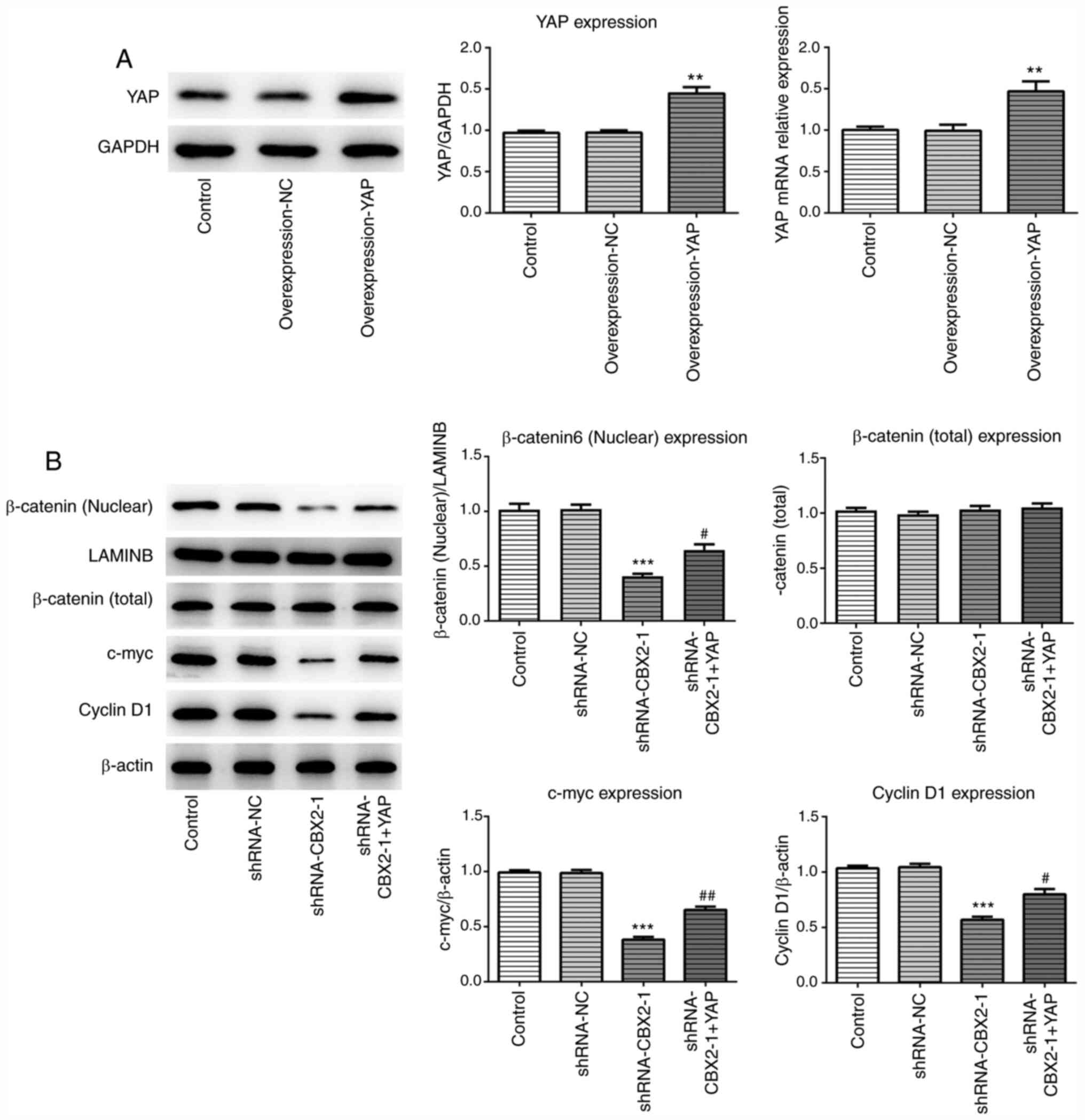|
1
|
Bray F, Ferlay J, Soerjomataram I, Siegel
RL, Torre LA and Jemal A: Global cancer statistics 2018: GLOBOCAN
estimates of incidence and mortality worldwide for 36 cancers in
185 countries. CA Cancer J Clin. 68:394–424. 2018. View Article : Google Scholar : PubMed/NCBI
|
|
2
|
Siegel RL, Miller KD and Jemal A: Cancer
statistics, 2018. CA Cancer J Clin. 68:7–30. 2018. View Article : Google Scholar : PubMed/NCBI
|
|
3
|
Yin J, Wu X, Li S, Li C and Guo Z: Impact
of environmental factors on gastric cancer: A review of the
scientific evidence, human prevention and adaptation. J Environ Sci
(China). 89:65–79. 2020. View Article : Google Scholar : PubMed/NCBI
|
|
4
|
Ohara H, Ishibashi Y, Yoshimura S,
Yamazaki R, Hatao F, Koshiishi T, Morita Y and Imamura K:
Intratumoral pseudoaneurysm within a liver metastasis of gastric
cancer: A case report. Surg Case Rep. 6:392020. View Article : Google Scholar : PubMed/NCBI
|
|
5
|
Fujita I, Toyokawa T, Makino T, Matsueda
K, Omote S and Horii J: Small early gastric cancer with synchronous
bone metastasis: A case report. Mol Clin Oncol. 12:202–207.
2020.PubMed/NCBI
|
|
6
|
Zong L, Abe M, Seto Y and Ji J: The
challenge of screening for early gastric cancer in China. Lancet.
388:26062016. View Article : Google Scholar : PubMed/NCBI
|
|
7
|
Yao J, Zhang H, Liu C, Chen S, Qian R and
Zhao K: miR-450b-3p inhibited the proliferation of gastric cancer
via regulating KLF7. Cancer Cell Int. 20:472020. View Article : Google Scholar : PubMed/NCBI
|
|
8
|
Wheeler LJ, Watson ZL, Qamar L, Yamamoto
TM, Post MD, Berning AA, Spillman MA, Behbakht K and Bitler BG:
CBX2 identified as driver of anoikis escape and dissemination in
high grade serous ovarian cancer. Oncogenesis. 7:922018. View Article : Google Scholar : PubMed/NCBI
|
|
9
|
Clermont PL, Sun L, Crea F, Thu KL, Zhang
A, Parolia A, Lam WL and Helgason CD: Genotranscriptomic
meta-analysis of the Polycomb gene CBX2 in human cancers: Initial
evidence of an oncogenic role. Br J Cancer. 111:1663–1672. 2014.
View Article : Google Scholar : PubMed/NCBI
|
|
10
|
Chen WY, Zhang XY, Liu T, Liu Y, Zhao YS
and Pang D: Chromobox homolog 2 protein: A novel biomarker for
predicting prognosis and Taxol sensitivity in patients with breast
cancer. Oncol Lett. 13:1149–1156. 2017. View Article : Google Scholar : PubMed/NCBI
|
|
11
|
Clermont PL, Crea F, Chiang YT, Lin D,
Zhang A, Wang JZ, Parolia A, Wu R, Xue H, Wang Y, et al:
Identification of the epigenetic reader CBX2 as a potential drug
target in advanced prostate cancer. Clin Epigenetics. 8:162016.
View Article : Google Scholar : PubMed/NCBI
|
|
12
|
Mao J, Tian Y, Wang C, Jiang K, Li R, Yao
Y, Zhang R, Sun D, Liang R, Gao Z, et al: CBX2 Regulates
Proliferation and Apoptosis via the Phosphorylation of YAP in
Hepatocellular Carcinoma. J Cancer. 10:2706–2719. 2019. View Article : Google Scholar : PubMed/NCBI
|
|
13
|
Dupont S, Morsut L, Aragona M, Enzo E,
Giulitti S, Cordenonsi M, Zanconato F, Le Digabel J, Forcato M,
Bicciato S, et al: Role of YAP/TAZ in mechanotransduction. Nature.
474:179–183. 2011. View Article : Google Scholar : PubMed/NCBI
|
|
14
|
Luo T, Mohan K, Iglesias PA and Robinson
DN: Molecular mechanisms of cellular mechanosensing. Nat Mater.
12:1064–1071. 2013. View
Article : Google Scholar : PubMed/NCBI
|
|
15
|
Low BC, Pan CQ, Shivashankar GV,
Bershadsky A, Sudol M and Sheetz M: YAP/TAZ as mechanosensors and
mechanotransducers in regulating organ size and tumor growth. FEBS
Lett. 588:2663–2670. 2014. View Article : Google Scholar : PubMed/NCBI
|
|
16
|
Maugeri-Saccà M and De Maria R: The Hippo
pathway in normal development and cancer. Pharmacol Ther.
186:60–72. 2018. View Article : Google Scholar : PubMed/NCBI
|
|
17
|
Shen T, Li Y, Zhu S, Yu J, Zhang B, Chen
X, Zhang Z, Ma Y, Niu Y and Shang Z: YAP1 plays a key role of the
conversion of normal fibroblasts into cancer-associated fibroblasts
that contribute to prostate cancer progression. J Exp Clin Cancer
Res. 39:362020. View Article : Google Scholar : PubMed/NCBI
|
|
18
|
Li S, Yu Z, Chen SS, Li F, Lei CY, Chen
XX, Bao JM, Luo Y, Lin GZ, Pang SY, et al: The YAP1 oncogene
contributes to bladder cancer cell proliferation and migration by
regulating the H19 long noncoding RNA. Urol Oncol. 33:427.e1–e10.
2015. View Article : Google Scholar
|
|
19
|
Wu F, Xing T, Gao X and Liu F: miR 501 3p
promotes colorectal cancer progression via activation of Wnt/β
catenin signaling. Int J Oncol. 55:671–683. 2019.PubMed/NCBI
|
|
20
|
Rosenbluh J, Nijhawan D, Cox AG, Li X,
Neal JT, Schafer EJ, Zack TI, Wang X, Tsherniak A, Schinzel AC, et
al: β-catenin-driven cancers require a YAP1 transcriptional complex
for survival and tumorigenesis. Cell. 151:1457–1473. 2012.
View Article : Google Scholar : PubMed/NCBI
|
|
21
|
Kang W, Zheng X, Wang P and Guo S:
Deguelin exerts anticancer activity of human gastric cancer MGC-803
and MKN-45 cells in vitro. Int J Mol Med. 41:3157–3166.
2018.PubMed/NCBI
|
|
22
|
Han MY, Nie JW, Li YY, Zhu YZ and Wu G:
Downregulation of NGAL is required for the inhibition of
proliferation and the promotion of apoptosis of human gastric
cancer MGC-803 cells. Cell Physiol Biochem. 50:694–705. 2018.
View Article : Google Scholar : PubMed/NCBI
|
|
23
|
Livak KJ and Schmittgen TD: Analysis of
relative gene expression data using real-time quantitative PCR and
the 2(-Delta Delta C(T)) Method. Methods. 25:402–408. 2001.
View Article : Google Scholar : PubMed/NCBI
|
|
24
|
Fang Q, Liu T, Yu C, Yang X, Shao Y, Shi
J, Ye X, Zheng X, Yan J, Xu D, et al: lncRNA TUG1 alleviates
cardiac hypertrophy by targeting miR-34a/DKK1/Wnt-β-catenin
signalling. J Cell Mol Med. 24:3678–3691. 2020. View Article : Google Scholar : PubMed/NCBI
|
|
25
|
Gobin E, Bagwell K, Wagner J, Mysona D,
Sandirasegarane S, Smith N, Bai S, Sharma A, Schleifer R and She
JX: A pan-cancer perspective of matrix metalloproteases (MMP) gene
expression profile and their diagnostic/prognostic potential. BMC
Cancer. 19:5812019. View Article : Google Scholar : PubMed/NCBI
|
|
26
|
Ghelfi F, Tieri M, Gori S, Nicolis F,
Petrella MC, Filiberti A, Apolone G and Titta L: Do cancer patients
change their diet in the e-health information era? A review of the
literature and a survey as a proposal for the Italian population.
Food Res Int. 104:59–68. 2018. View Article : Google Scholar : PubMed/NCBI
|
|
27
|
Zhao DL and Wu QL: Effect of inhibition to
Yes-related proteins-mediated Wnt/β-catenin signaling pathway
through miR-195-5p on apoptosis of gastric cancer cells. Eur Rev
Med Pharmacol Sci. 23:6486–6496. 2019.PubMed/NCBI
|
|
28
|
Morey L, Pascual G, Cozzuto L, Roma G,
Wutz A, Benitah SA and Di Croce L: Nonoverlapping functions of the
Polycomb group Cbx family of proteins in embryonic stem cells. Cell
Stem Cell. 10:47–62. 2012. View Article : Google Scholar : PubMed/NCBI
|
|
29
|
Han Q, Li C, Cao Y, Bao J, Li K, Song R,
Chen X, Li J and Wu X: CBX2 is a functional target of miRNA let-7a
and acts as a tumor promoter in osteosarcoma. Cancer Med.
8:3981–3991. 2019. View Article : Google Scholar : PubMed/NCBI
|
|
30
|
Nusse R and Clevers H: Wnt/β-catenin
signaling, disease, and emerging therapeutic modalities. Cell.
169:985–999. 2017. View Article : Google Scholar : PubMed/NCBI
|
|
31
|
Li F, Zhang L, Li W, Deng J, Zheng J, An
M, Lu J and Zhou Y: Circular RNA ITCH has inhibitory effect on ESCC
by suppressing the Wnt/β-catenin pathway. Oncotarget. 6:6001–6013.
2015. View Article : Google Scholar : PubMed/NCBI
|
|
32
|
Yang J, Liu Y, Mai X, Lu S, Jin L and Tai
X: STAT1-induced upregulation of LINC00467 promotes the
proliferation migration of lung adenocarcinoma cells by
epigenetically silencing DKK1 to activate Wnt/β-catenin signaling
pathway. Biochem Biophys Res Commun. 514:118–126. 2019. View Article : Google Scholar : PubMed/NCBI
|
|
33
|
Moya IM, Castaldo SA, Van den Mooter L,
Soheily S, Sansores-Garcia L, Jacobs J, Mannaerts I, Xie J,
Verboven E, Hillen H, et al: Peritumoral activation of the Hippo
pathway effectors YAP and TAZ suppresses liver cancer in mice.
Science. 366:1029–1034. 2019. View Article : Google Scholar : PubMed/NCBI
|
|
34
|
Zhang Z, Du J, Wang S, Shao L, Jin K, Li
F, Wei B, Ding W, Fu P, van Dam H, et al: OTUB2 Promotes Cancer
Metastasis via Hippo-Independent Activation of YAP and TAZ. Mol
Cell. 73:7–21.e7. 2019. View Article : Google Scholar : PubMed/NCBI
|
|
35
|
Koo JH, Plouffe SW, Meng Z, Lee DH, Yang
D, Lim DS, Wang CY and Guan KL: Induction of AP-1 by YAP/TAZ
contributes to cell proliferation and organ growth. Genes Dev.
34:72–86. 2020. View Article : Google Scholar : PubMed/NCBI
|
|
36
|
Piccolo S, Dupont S and Cordenonsi M: The
biology of YAP/TAZ: Hippo signaling and beyond. Physiol Rev.
94:1287–1312. 2014. View Article : Google Scholar : PubMed/NCBI
|
|
37
|
Liu H, Dai X, Cao X, Yan H, Ji X, Zhang H,
Shen S, Si Y, Chen J, Li L, et al: PRDM4 mediates YAP induced cell
invasion by activating leukocyte specific integrin β2 expression.
EMBO Rep. 19:e451802018. View Article : Google Scholar : PubMed/NCBI
|
|
38
|
Tang X, Sun Y, Wan G, Sun J, Sun J and Pan
C: Knockdown of YAP inhibits growth in Hep-2 laryngeal cancer cells
via epithelial-mesenchymal transition and the Wnt/β-catenin
pathway. BMC Cancer. 19:6542019. View Article : Google Scholar : PubMed/NCBI
|
|
39
|
Wang S, Ma K, Zhou C, Wang Y, Hu G, Chen
L, Li Z, Hu C, Xu Q, Zhu H, et al: LKB1 and YAP phosphorylation
play important roles in Celastrol-induced β-catenin degradation in
colorectal cancer. Ther Adv Med Oncol. 11:17588359198437362019.
View Article : Google Scholar : PubMed/NCBI
|



